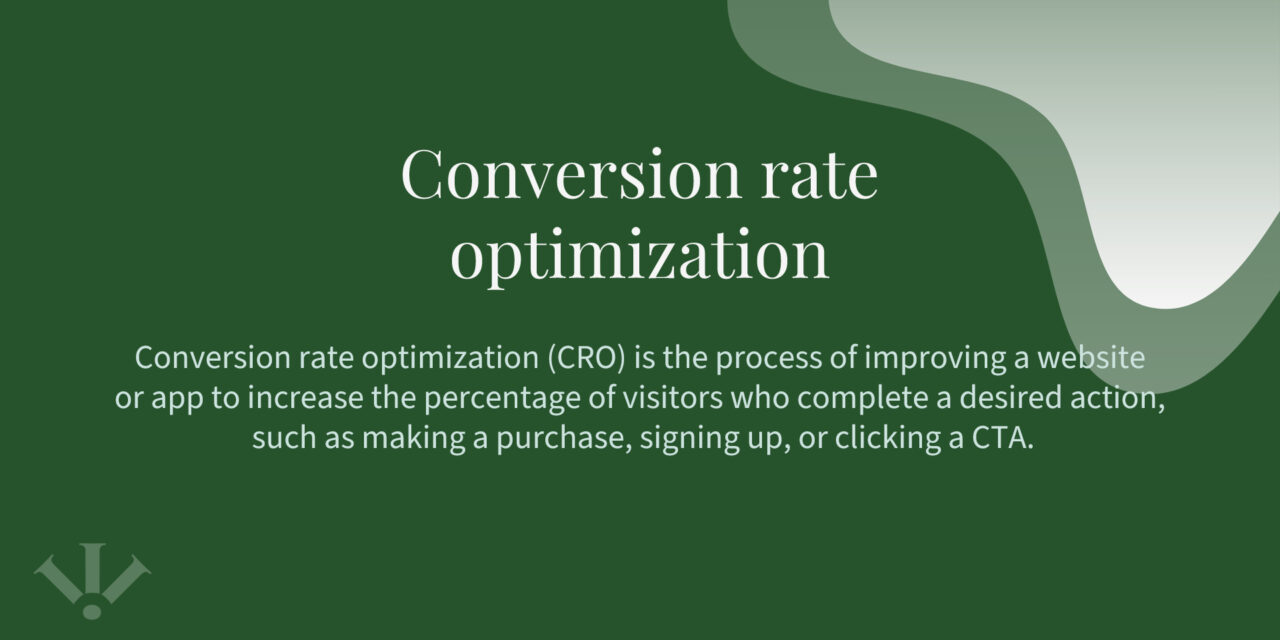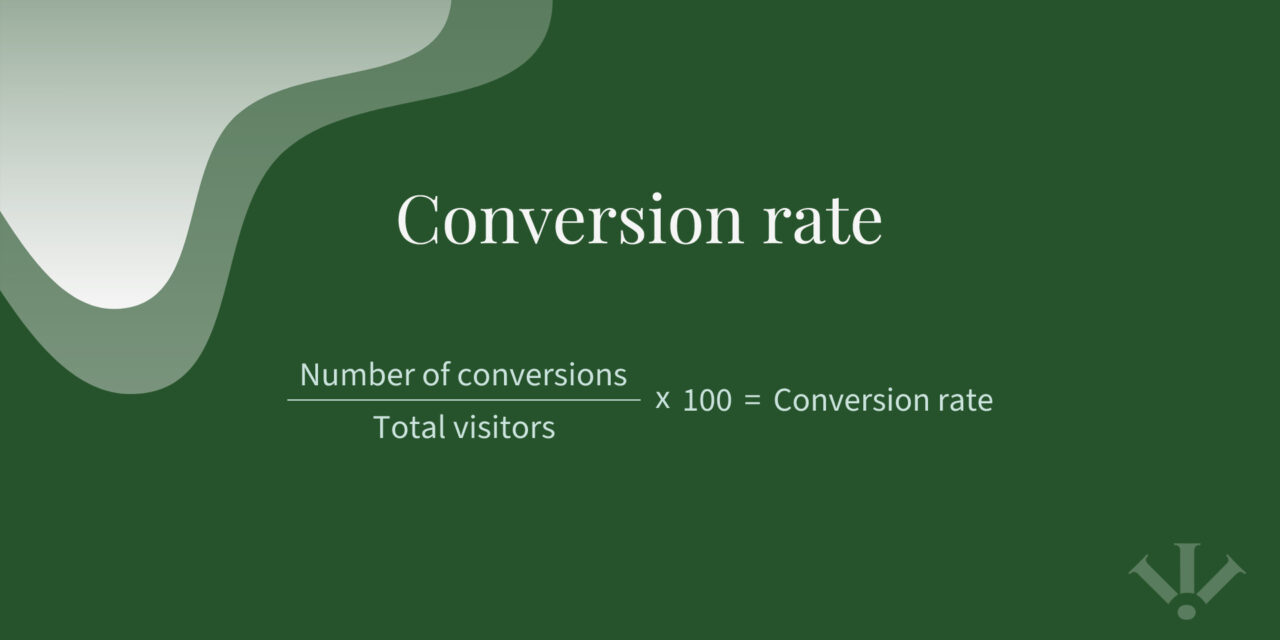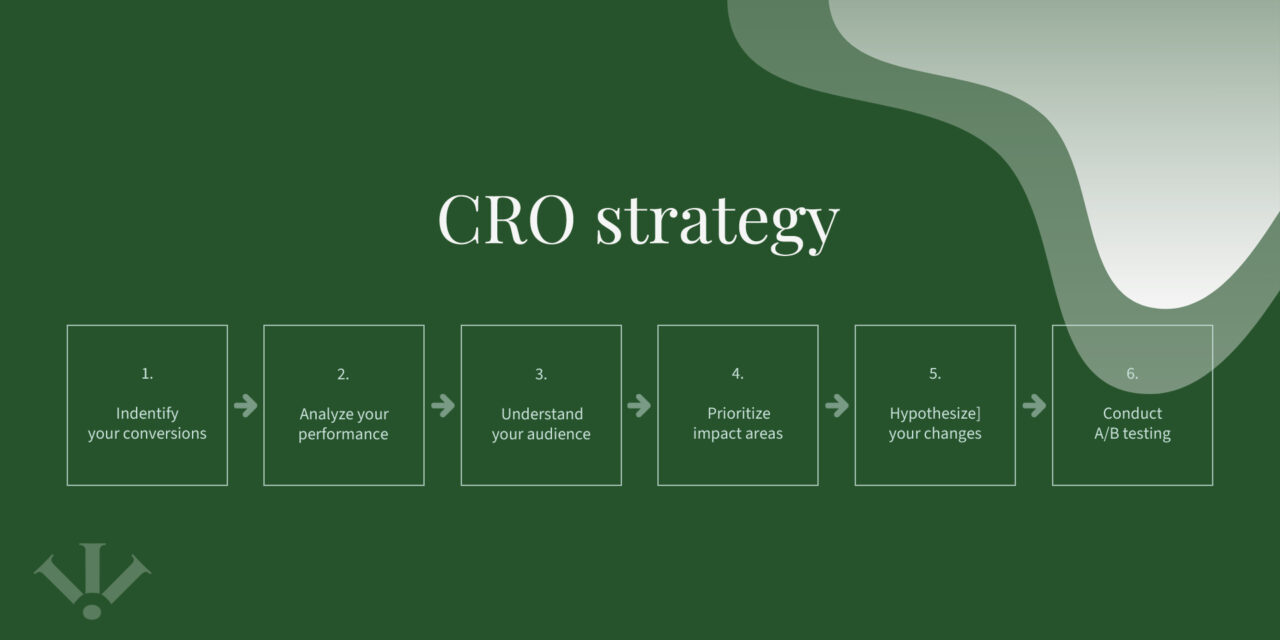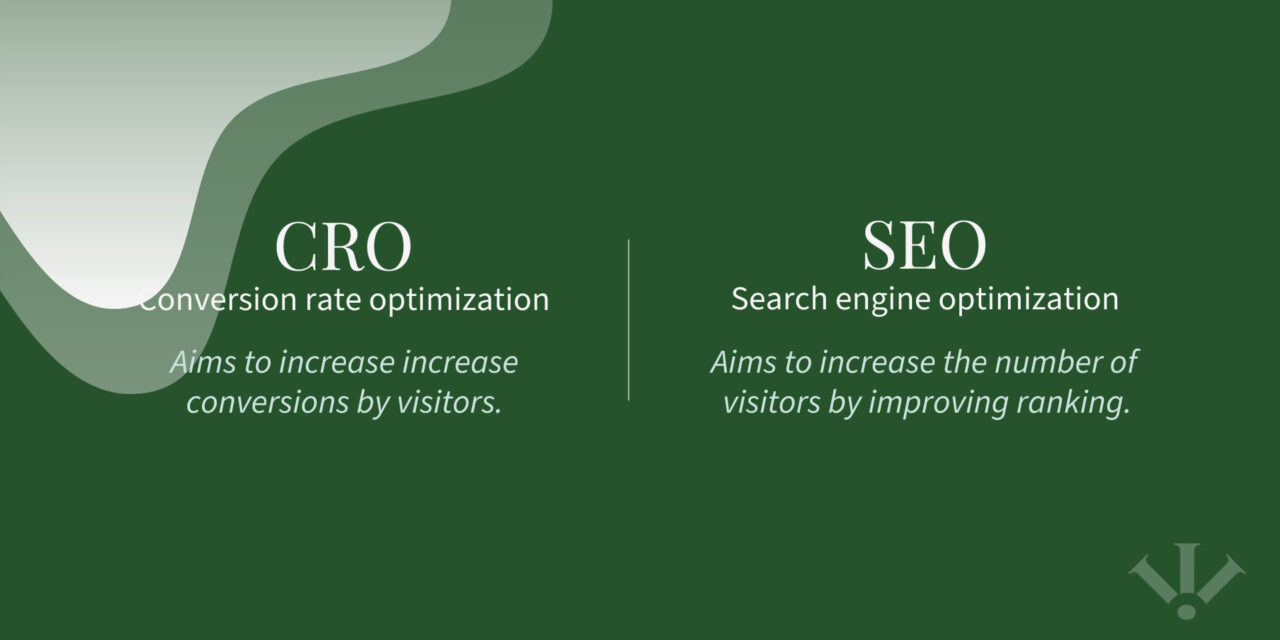Conversion rate optimization is a way for you to make your website work harder.
Building a website is one thing. Having a website that encourages visitors to get in touch, make a purchase or fill out a form is another level. Conversion rate optimization is your step up to that level.
Conversion rate optimization (CRO) is the process of improving a website or app to increase the percentage of visitors who complete a desired action, such as making a purchase, signing up, or clicking a CTA.
In this blog post, we’ll talk through conversion optimization, how it works and why it’s so important.
Jump to…
What is the conversion rate?
What is a good conversion rate?
Conversion optimization strategy
CRO: Actionable changes
CRO tools
Frequently asked questions

What is the conversion rate?
Before we start talking about optimizing your conversion rate, we’ll start by talking about what a conversion rate actually is.
The conversion rate is the percentage of visitors who take a desired action on your site. That desired action could be:
- Purchasing a product
- Filling in a web form
- Signing up for a service
- Making a phone call
The conversion rate is calculated by:
(Total number of conversions ÷ total number of visitors) x 100 = conversion rate.
So, if 100 people visit your site and only 2 people get in touch, your conversion rate would be 2%.
You can look at the overall conversion rate of your site, by counting total visitors and total conversions.
Or, you can focus on a specific conversion action, for example, just looking at newsletter sign-ups. If you’re focussing on a specific action, make sure you only count visitors to the page your newsletter sign-up form is listed on.

What’s a good website conversion rate?
Conversion rates can vary from industry to industry, but as a general rule, 2-5% is an average conversion rate across most industries. One 2023 survey by Ruler Analytics found that an average conversion rate across 14 different industries was 2.9%.
However, even if your website is at the top end of this, there’s always room for improvement.
That’s where conversion optimization comes in.
CRO can help increase the percentage of users who perform a desired action on your site.
Creating a conversion rate optimization strategy
A good CRO strategy involves data-driven insights, testing and continual tweaking and improvement.
Whilst the perfect CRO strategy will vary from website to website, the below is a general guide.

1. Identify your conversions
Before you can optimize for conversions, you need to understand what conversions you want to optimize for.
These will look different depending on your exact business and the industry you are in.
If you run an e-commerce store, for example, a conversion might be a purchase.
However, your visitors are probably more cautious if you own a SaaS company. If that’s the case, signing up for a free trial may maybe a more realistic conversion to optimize for.
Whatever the case, once you’ve identified your desired conversion, you can start thinking about optimization.
2. Analyze your performance
The next step is to look at where you currently are.
You should complete a website audit to review your conversion data, website traffic sources and user behaviour.
Tools like Google Analytics and Hotjar are a great help here. You should look at:
- Website traffic sources: How many visitors do you get from paid, organic traffic and referrals?
- Browsing behavior: How do users navigate your site? This is where Hotjar comes in, it shows you visual heat maps so you can see which parts of your site get the most attention and which parts get ignored.
- Conversion funnels: How do your visitors move through your sales funnel, and at what stage do they drop off?
A word on drop-off points
Understanding drop-off points is incredibly important.
A drop-off point is a stage in the user journey where a significant percentage of website visitors abandon your product/service.
Drop-off points can be triggered by poor user experience (e.g. confusing navigation), broken links or slow loading times.
They might also be triggered by poor copywriting, as complex language can confuse visitors and dissuade them from converting.
Understanding (and improving) drop-off points can help you improve conversion rates, retention and revenue.
3. Understand your audience
Understanding your target audience is rule 1 in marketing and step 3 in our CRO strategy.
Different visitors will behave differently. Those who have come in from paid ads might be more ready to convert than those who came organically.
Age, gender and location can also have a huge impact on audience behavior.
Then, you need to think about first-time visitors vs return visitors too.
Once you understand your audience, you can start thinking about custom messaging.
Example time…
Let’s imagine you have an ecommerce site and you want to optimize it for conversions.
When someone visits your site for the first time, you might want to show them more about product benefits with some demonstrations.
But if someone visits your site for a second time, they probably don’t want to see this content again.
You might get better results by scrapping the benefits and demos and giving the visitor a limited-time offer or free shipping instead, which pushes them more towards making a purchase.
4. Prioritize impact areas
We’re starting to get to the practical stage now. The next step is to think about high-impact areas.
These will be pages with the highest traffic or highest potential impact, for example, product pages, checkout pages or ad landing pages.
Once you’ve chosen a few key areas to improve, you should pinpoint specific issues.
Specific issues might be things like…
- Poor form design: Length, design and form errors can impact the conversion rate.
- Checkout: Complicated or lengthy checkout processes can lead to high shopping cart abandonment rates.
- CTAs: Unclear or poorly placed CTAs can reduce conversion rates.
- Mobile optimization: Around 96.2% of global users access the internet via mobile devices, while internet access via laptop or desktop was reported by almost 62.8% of respondents (Statista). It’s incredibly important that your site displays and works on mobile just as well as it does on desktop.
5. Hypothesize your changes
Based on your most important conversions, your current performance, your audience and your high-impact areas, you can start planning and testing.
Make educated and informed guesses about what changes might improve your conversion rate. That might be simplifying your checkout processes, adding limited-time offers to increase urgency, or, redesigning your forms so they’re easier to complete.
Once you’ve decided what you’re going to test, think about how you’re going to measure it.
Changing your checkout process and adding limited-time offers could be measured by an increase in purchases. Redesigning your forms could be measured through an increase in form submissions.
6. Conduct A/B testing
Once you know what you’re going to change and how you’re going to measure it, you can implement it through A/B tests.
It’s essential that you only change one thing at a time.
If you change the checkout process, the CTA buttons and the headlines all at the same time, you won’t know which change had the biggest impact.
So, you should create variations.
Set up two versions of the same page, the original and the test. Then, run the test and compare the results.
When running your test, make sure you allow enough time to actually see the impact. You want to have a large enough number of visitors that you can make an informed decision about the results.
You can use tools like Google Optimize to help you with this. Google Optimize is a powerful tool that uses a tracking snippet, page settings and audience targeting to trigger experiments on a web page.
CRO: Actionable changes
Specific changes you should implement will depend on your research, the type of website you have and what your audience is looking for.
But, to get you started, here are some ideas for small CRO changes that can make a big impact.
Changing buttons
Something simple like changing the text on a button from ‘Submit’ to ‘Get your free guide’ can have a huge impact on your website’s conversion rate.
Changing headlines
Test different versions of headlines to see what works best with your audiences.
Changing sections
Moving sections around your site is not a mammoth task but it can make a huge impact. Changing the order of your pages can offer a better user experience which can help your website’s conversion rate.
Adding pop-ups
Pop-ups are a great way to persuade users to stay on your site. Hotjar, for example, added a pop-up offering users a free ebook just as they were about to leave the site. This led to an increase of 60-70 users per month (Unbounce).
Changing customer testimonials
Authentic testimonials are a great form of social proof. They’re evidence that other people have purchased and found value in your product, which is great for converting potential customers.

Reviewing and retweaking
Once you’ve created a strategy, implemented some of the findings and started seeing results… It’s time to review again.
One of the most important things to understand about CRO is that it’s an ongoing battle.
Your audience is always changing, and so are your competitors, so you can’t stand still.
Your initial website overhaul will probably be the biggest change. Then, after that, you should always be looking for small ways to CRO test and improve.
CRO tools
There are so many CRO tools that can help you understand your audience and their behaviour better.
User behavior tools
User behavior tools help you understand how visitors interact with your website by tracking clicks, scrolls and navigation in real time.
Tools like Hotjar, Crazy Egg and FullStory can help you pinpoint friction points and confusing elements on your site.
A/B testing tools
A/B testing tools help you test different versions of your website, so you can understand what’s most effective.
Optimizely and VWO (Visual Website Optimizer) help you experiment with advanced website changes, so you can track the impact.
Funnel analysis tools
Funnel analysis tools offer deeper insight into your website’s performance, so you can understand where your users drop off.
Google Analytics offers traffic analysis, goal tracking and conversion funnel visualization. Mixpanel can help you with event tracking, funnel analysis and cohort analysis too.
Summing up
Conversion rate optimization is a powerful strategy to maximize the effectiveness of your website.
By focusing on data-driven insights, your audience, testing and refining, you can turn website visitors into loyal customers and engaged users.
Whether you improve checkout flows, rework CTAs or redesign pages, CRO is a systematic way to improve user experience, increase conversions and protect your bottom line.
FAQ
What is conversion rate optimization?
Conversion rate optimization (CRO) is the process of improving a website or app to increase the percentage of visitors who complete a desired action, such as making a purchase, signing up, or clicking a CTA.
What is the difference between conversion rate optimization and SEO?
Conversion rate optimization and search engine optimization are both digital marketing strategies, but they’re not quite the same thing.
CRO looks at increasing the number of visitors who take a desired action (conversion). This might be signing up for a newsletter, making a purchase or getting in touch.
SEO focuses on improving a website’s visibility in search engine results (SERPs), to increase site traffic.
SEO brings more people onto your site and CRO helps convert them once they get there.

Is conversion rate optimization worth it?
100%. Conversion rate optimization is a way to make your website work harder, to ensure it converts your website visitors. Conversions mean more sales, more revenue and more customers, so, we definitely think it’s worth it.
To make sure you get the most from your efforts, though, it’s important to start small. Changing everything all at once won’t help you. You need to make small changes, let them run, and then measure the results. That way you can learn about which changes made the most impact.
How do you improve conversion rate optimization?
There’s no easy answer to this as it depends on your industry, your site and your users. However, following our conversion rate optimization strategy is a good start.
Once you identify your main conversions, understand your current performance and get to know your audience, you can start thinking about changes that might improve your conversion rate.
Then, once you’ve decided exactly what those changes are, and how you are going to measure them, you can start A/B testing to see what works.
Remember that conversion rate optimization is an ongoing effort, not a simple tick box. You need to constantly re-evaluate and re-assess to look for further areas for improvement.


